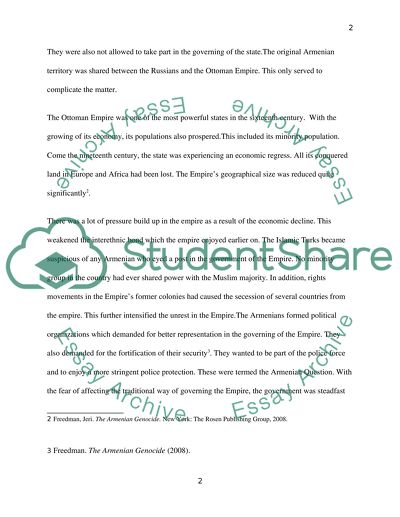Cite this document
(“Armenian Genocide Research Paper Example | Topics and Well Written Essays - 2500 words”, n.d.)
Retrieved de https://studentshare.org/history/1395952-armenian-genocide
Retrieved de https://studentshare.org/history/1395952-armenian-genocide
(Armenian Genocide Research Paper Example | Topics and Well Written Essays - 2500 Words)
https://studentshare.org/history/1395952-armenian-genocide.
https://studentshare.org/history/1395952-armenian-genocide.
“Armenian Genocide Research Paper Example | Topics and Well Written Essays - 2500 Words”, n.d. https://studentshare.org/history/1395952-armenian-genocide.


